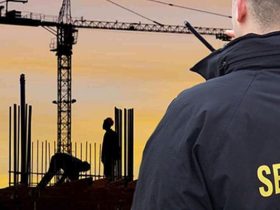In today’s evolving senior care landscape, assisted living communities face increasing pressure to deliver exceptional resident care while maintaining streamlined operations. This challenge has led to the rise of advanced management tools tailored specifically for assisted living environments. These systems are now becoming essential in transforming how facilities operate—particularly in how they communicate with residents, families, and staff, and how they enhance the overall quality of care.
Assisted living management software tools serve as the digital backbone of senior care communities. By centralizing information and automating routine tasks, they allow caregivers and administrators to focus more on the personal and emotional needs of residents rather than being tied up with paperwork. From health record tracking to medication management and daily activity logging, these tools help ensure that nothing falls through the cracks.
One of the most significant shifts brought about by these platforms is the improvement in communication. With features that allow real-time updates, families can stay closely connected to their loved ones’ daily experiences without having to make constant calls or visits. Staff can securely share updates, schedule changes, or medical concerns, ensuring that families are never out of the loop. This transparency not only builds trust but also eases anxiety among family members who may be far from the facility.
Internally, these systems improve staff collaboration. Caregivers can quickly view a resident’s complete care history, dietary restrictions, preferred routines, and recent changes—all from a single platform. This eliminates the fragmentation often found in traditional paper-based systems or scattered communication methods. The result is a unified team that is better equipped to deliver consistent, informed, and compassionate care.
Resident engagement also receives a boost. Many platforms allow for scheduling social activities, therapy sessions, and wellness checks—all while monitoring participation. This encourages residents to remain active and socially connected, which is a cornerstone of their emotional and mental well-being. When residents feel engaged and heard, their overall satisfaction with the community improves significantly.
Another critical benefit lies in compliance and safety. These tools help facilities stay aligned with regulatory requirements by automatically logging vital activities and generating reports as needed. Whether it’s medication administration or staff-to-resident ratios, having an accurate digital trail simplifies audits and internal reviews. Furthermore, alerts and notifications can be set to flag missed medications, appointments, or unusual patterns in behavior—offering an added layer of security.
Adopting assisted living management tools is not just about technology; it’s about rethinking the entire caregiving approach. It allows senior living providers to put people first while using smart systems to support daily operations. The blend of technology and human care creates an environment where residents feel valued, families feel informed, and staff feel empowered.
In an age where personalization and efficiency are paramount, these tools have proven to be more than just software—they are essential partners in delivering high-quality, respectful, and dignified care for seniors. As assisted living continues to evolve, embracing these innovations is a vital step toward setting new standards in resident care and communication.










